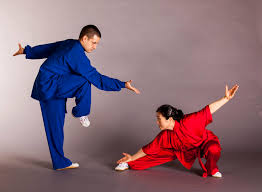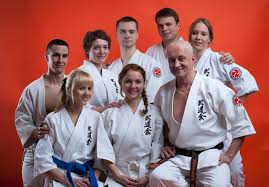Baguazhan
 Baguazhan is a Chinese martial art that consists of palm movements and circular movements.
Baguazhan is a Chinese martial art that consists of palm movements and circular movements.
History of the appearance of style
Baguazhan – Chinese martial art, which consists of movements with the palms of the hands and movement in a circle. This style of martial art began its development from 1820 to 1850 during the reign of the Qing Dynasty, under the motto “Daoguan”. This style, known today, was founded by Dong Haichuan from Hebei Province, Wenan County. Dong developed a style technique based on local Wushu techniques. It is important to note that in the 30s of the 20th century in Tianjin, several students were writing stories that Dong Hai Chuan had learned this martial art from his Taoist mentor named Bi Chengxia from Anhui province in the mountains of Jiuhua, to give significance to this fighting style. Therefore, according to legend, these students themselves studied under Bi Chengxia, therefore, differences in their style with Dong Haichuan’s style is just a feature of the style, and not personal mistakes of study. Over time, such a legend has taken root in history, and now, many people still take it for the truth. In 1875, the founder, Dong Haichuan, visited Beijing and began teaching his new combat technique there.
Style features
The main distinguishing feature of Bagua is the provision of the constant use of special military equipment in constant circular movement. In this style, all movements flow from one to another, complementing and linking all possible movements of martial art among themselves. Most of the Baguazhan styles have a single basic method of training – practicing techniques while moving in a circle. Despite this, there are some areas of Baguazhan style, where such movement in a circle stands out as an independent exercise, and the main combat technique is to practice movements in straight paths.
Baguazhan Teacher and founder of the style – Dong Haichuan practiced a differentiated approach in his lessons, so the orthodox style has changed significantly and today there is a whole variety of options. The oldest student who studied in Dong Hai Chuan for more than 10 years is Yin Fu. It was Yin Fu who was entrusted with coaching the protection of the Dowager Empress Cixi. A feature of this direction is the use of the shape of the palm, which is also called “palm – the tongue of a cow.” The main tactics of the fighting style are long-range attacks, and the circular motion in most cases is used to leave the line of attack and attack the opponent from an unexpected angle. The very technique of Baguazhan movements in the Yin Fu direction was first described by his son, Yin Yuzhang, in his book entitled “A Brief Collection of Baguazhan”, which was published in 1931. Another follower and disciple was Shi Jidong, whom Dong Haichuan made his adopted son. Baguazhan Shi Jidong is still practiced in Beijing, but it is still not so widespread. Despite this, his direction is quite popular in Jiangsu, where he lived and continued the work of his teacher, a student of Yang Rongben. Subsequently, Yang Rongben became a Buddhist monk and soon went on a journey, leaving only a few of his followers.
The largest contribution to the dissemination of Baguazhan by Dong Haichuan’s student is Cheng Tinghua, who lived between 1848 and 1900 and learned from his teacher for about five years. Before the appearance of Dong Hai Chuan, Cheng Tinghua had a wrestling championship in his county, which, of course, influenced his military equipment. The form of a palm practiced by him in baguazhan is the form “palm – claws of a dragon”. This palm shape makes it easier to grab. In addition, Cheng Tinghua introduced into his lessons the tactics of trying to go behind the opponent’s back, as well as the use of punches in combination with throws.
Other students came to the founder of the fighting style – Dong Haichuan, when he was already old and therefore, they did not learn from him for long. After the death of the teacher, his students continued their studies with Cheng Tinghua, and some of them also received additional instructions from Yin Fu, who rarely and eagerly shared his knowledge. Thus, several areas of the Baguazhang martial art arose: followers of Liang Zhenpu (1863-1932); followers of Liu Fengchun (1853-1922); followers of Zhang Zhankuy (1859-1940); followers of Liu Baozhen (1861-1922); followers of Gao Isheng (1866-1950) (student of Cheng Tinghua).




